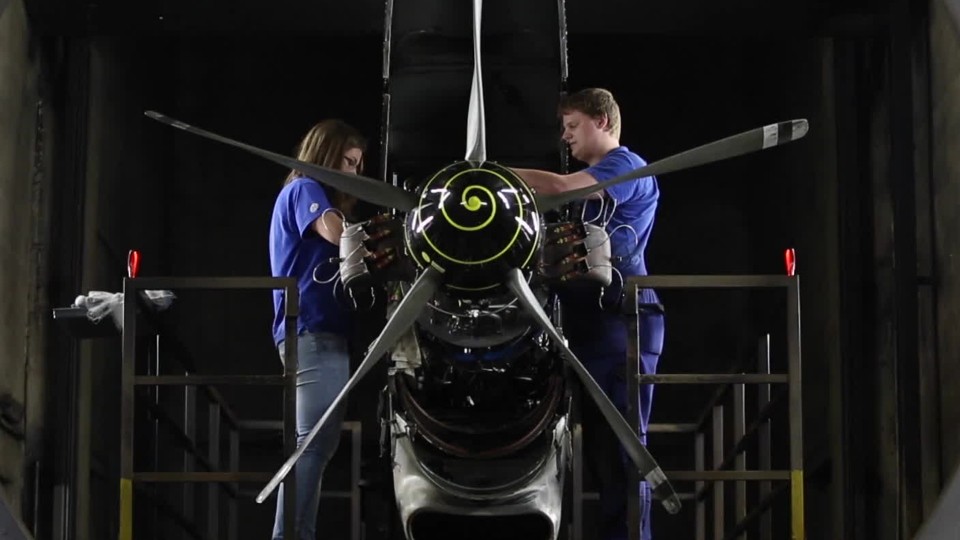Aerospace Engineering & Operations Technologists & Technicians
Engineering Technician, Instrumentation Technician, Systems Test Technician, Test Technician
 Select a military branch to see samples.
Select a military branch to see samples.
Advanced Fighter Aircraft Integrated Avionics; Aerospace Propulsion Helper, F101, F110, F118, TF34 Jet Engines (A-10, B-1, B-2, F-16, U-2 aircraft); Airborne Mission Systems Specialist Craftsman, HC-130P/N; Aircraft Armament Systems Apprentice, F/A-22; Airlift/Special Mission Aircraft Maintenance Helper; Battle Management Operations Craftsman, Weapons Director; Helicopter/Tiltrotor Aircraft Maintenance Apprentice, H-60; Missile And Space Systems Maintenance Helper; Refuel/Bomber Aircraft Maintenance Journeyman, B-52; Space Systems Operations
AH-64 Armament/Electrical/Avionics Systems Repairer; Air Defense (AD) Enhanced Early Warning System Operator; Aircraft Components Repair Supervisor; Aircraft Pneudraulics Repairer; Armament/Electrical/Avionics Repair Supervisor; Aviation All-Source Intelligence; Aviation Officer; Command and Control Systems Integrator; MQ-1 Repairer; Space and Missile Defense Operations
Aviation Engineering Specialty; Aviation Maintenance Technician; Avionics Electrical Technician
Aeronautical Engineer; Aircraft Avionics Technician, V-22; Aircraft Intermediate Level Hydraulic/Pneumatic Mechanic; Avionics Chief; Fixed-Wing Aircraft Airframe Mechanic, KC-130; Fixed-Wing Aircraft Mechanic, F-35; Fixed-Wing Aircraft Safety Equipment Mechanic, F-35; Helicopter Crew Chief, CH-53; Helicopter/Tiltrotor Mechanic-Trainee; Test Pilot/Flight Test Project Officer
A/F 37T-21 Aircraft Engine Components Test Stand; Aircraft Electronic Identification (IFF) IMA Technician; Aviation Electrician's Mate; Aviation Tactical Readiness Officer; E-2C Hawkeye 2000 Systems Organizational Initial Maintenance Technician; Electronic Installation and Maintenance Planning Officer (General); Guided Missile Type Project Officer (Ship-Launched); MH-60S Airborne Mine Countermeasures (AMCM) Systems Maintenance Technician; Space Acquisition Officer; TacMobile Maintenance System Technician
Space Systems Operations; Space Systems Operations Apprentice; Space Systems Operations Craftsman; Space Systems Operations Helper; Space Systems Operations Journeyman
What they do:
Operate, install, adjust, and maintain integrated computer/communications systems, consoles, simulators, and other data acquisition, test, and measurement instruments and equipment, which are used to launch, track, position, and evaluate air and space vehicles. May record and interpret test data.
On the job, you would:
- Test aircraft systems under simulated operational conditions, performing systems readiness tests and pre- and post-operational checkouts, to establish design or fabrication parameters.
- Identify required data, data acquisition plans, and test parameters, setting up equipment to conform to these specifications.
- Inspect, diagnose, maintain, and operate test setups and equipment to detect malfunctions.
Knowledge
Engineering and Technology
- mechanical
- product and service development
Math and Science
- arithmetic, algebra, geometry, calculus, or statistics
- physics
Manufactured or Agricultural Goods
- manufacture and distribution of products
Business
- customer service
Skills
Basic Skills
- thinking about the pros and cons of different ways to solve a problem
- reading work related information
Problem Solving
- noticing a problem and figuring out the best way to solve it
People and Technology Systems
- thinking about the pros and cons of different options and picking the best one
- figuring out how a system should work and how changes in the future will affect it
Abilities
Verbal
- communicate by speaking
- listen and understand what people say
Ideas and Logic
- make general rules or come up with answers from lots of detailed information
- notice when problems happen
Visual Understanding
- see hidden patterns
- quickly compare groups of letters, numbers, pictures, or other things
Attention
- pay attention to something without being distracted
Personality
People interested in this work like activities that include practical, hands-on problems and solutions.
They do well at jobs that need:
- Cautiousness
- Integrity
- Attention to Detail
- Dependability
- Intellectual Curiosity
- Perseverance
Technology
You might use software like this on the job:
Program testing software
- JUnit
- Selenium
Presentation software
- Microsoft PowerPoint
Operating system software
- Red Hat Enterprise Linux
- UNIX
Education
Education: (rated 3 of 5)
certificate after high school or
associate's degree
usually needed
associate's degree
usually needed
Job Outlook
Bright
New job opportunities are very likely in the future.
Explore More
- Automotive Engineering Technicians
- Avionics Technicians
- Calibration Technologists & Technicians
- Electro-Mechanical & Mechatronics Technologists & Technicians
- Mechanical Engineering Technologists & Technicians
You might like a career in one of these industries:
See more details at O*NET OnLine about Aerospace Engineering & Operations Technologists & Technicians.





